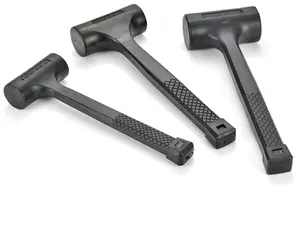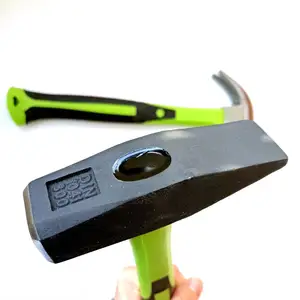

High Quality Dead Blow Mallet Hammer


Machinist Hammer GermanType Blacksmith Hammer Dead Blow Machinist's Hammer With Plastic Coating Handle






















A dead blow hammer is a tool not to be underestimated. This specialized mallet has a unique design and function that set it apart from other types of hammers. It's a versatile tool used in multiple industries, and its design is focused on minimizing rebound and delivering a maximum impact without damaging the surface.
When it comes to dead blow hammers, there are several types each with its unique specifications. The large dead blow hammer and the 10 lb dead blow hammer are often used for heavy-duty tasks due to their weight and strength. On the other hand, the small dead blow hammer is a great tool for delicate tasks that require precision. The 2lb dead blow hammer and 4lb dead blow hammer are popular choices for general-purpose use, providing a balance between weight and control.
The long handle dead blow hammer is designed for tasks that require an extended reach without sacrificing control and accuracy. There's also the snap on dead blow hammer, a premium model known for its durability and efficiency. It's important to remember that choosing the right type of hammer depends on the specific task at hand.
The dead blow hammer has a wide range of applications across different industries. It's commonly used in automotive repairs, construction, woodworking, and metalworking, among others. Its unique design allows it to deliver a powerful blow without causing damage or leaving marks on the surface. For example, in automotive repairs, a soft blow hammer is often used when working on delicate parts or surfaces. The rubber dead blow hammer is a popular choice for woodworking as it doesn't damage or mar the wood surface. The 20 lb dead blow hammer, on the other hand, is commonly used in construction for tasks that require a significant amount of force.
Dead blow hammers are made from a variety of materials, each contributing to the tool's performance and durability. The head of the hammer is typically filled with sand or lead shot. This design is what minimizes rebound and delivers a powerful blow with less force. The exterior of the hammer is often made of polyurethane, rubber, or other non-marring materials. These materials ensure that the tool does not damage the surface it's used on. The handle of the dead blow hammer could be made from steel, wood, or fiberglass, each offering different levels of durability and comfort.
The dead blow hammer is a versatile tool with a unique design and function. With a variety of types available, it's used in a wide range of applications across different industries. The materials used in its construction are chosen for their durability and ability to deliver a powerful, non-damaging blow.